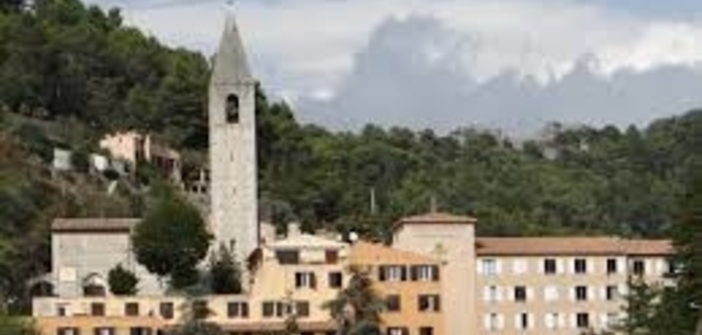In the 11th century, monks from the Abbey of Saint Pons of Nice built a chapel there. A century later, the priory of Peille came under the management of the canons of Saint Ruf of Avignon.
These canons expanded the building, adding a sacristy, a Lombard-style bell tower, and the choir. At the end of the 14th century, a new extension of the church was carried out with the nave in 1327. These expansions are evidence of the vitality of this village and its surroundings. Like most churches dating from the Middle Ages, this building contains tombs, including those of the lordly families. The monks of Saint Ruf were buried at Notre Dame of the Assumption. The victims of the 16th-century plague were also buried there.
During excavations, numerous bones were found in the subsoil. They came from the old cemetery that was removed in the 19th century. This burial site was located in front of the church. In the 16th century, the entrance was arranged as it is known today. With the regime of commenda, the monks of Saint Ruf left Peille in the 17th century, and the church was secularized. After the revolution and the empire, the County of Nice was annexed by France, and places of worship were desecrated or abandoned. The Sardinian restoration allowed the entire building, including the roofs, to be restored between 1829 and 1832.
The earthquake of 1887 caused significant damage to the church, and repairs restored it. In the 20th century, the flooring was changed, and the choir was modified by removing two pillars. Notre Dame of the Assumption retains traces of successive expansions and changes.
A little observation is enough to discover traces of the past on the masonry, including the door leading to the old cemetery, blinded windows, and the vault of the 11th-century chapel. During the latest restoration, the altar of Saint Symphorien was removed.
It is regrettable, as this altar had been erected after the 16th-century earthquake when the chapel dedicated to this saint was destroyed, along with the noble district. There are two entrances in this church: the one from the 16th century and the Romanesque door to the right of the main access, which was the entrance to the first chapel of the monks of Saint Pons.
To conclude, the gibbet will be mentioned where the executioner carried out his task of high justice. The condemned would arrive on foot from the Place of the Colle and suffer their punishment, remaining hanged above the precipice. The gallows were adjacent to this church dedicated to the Madonna.
Thierry Jan


